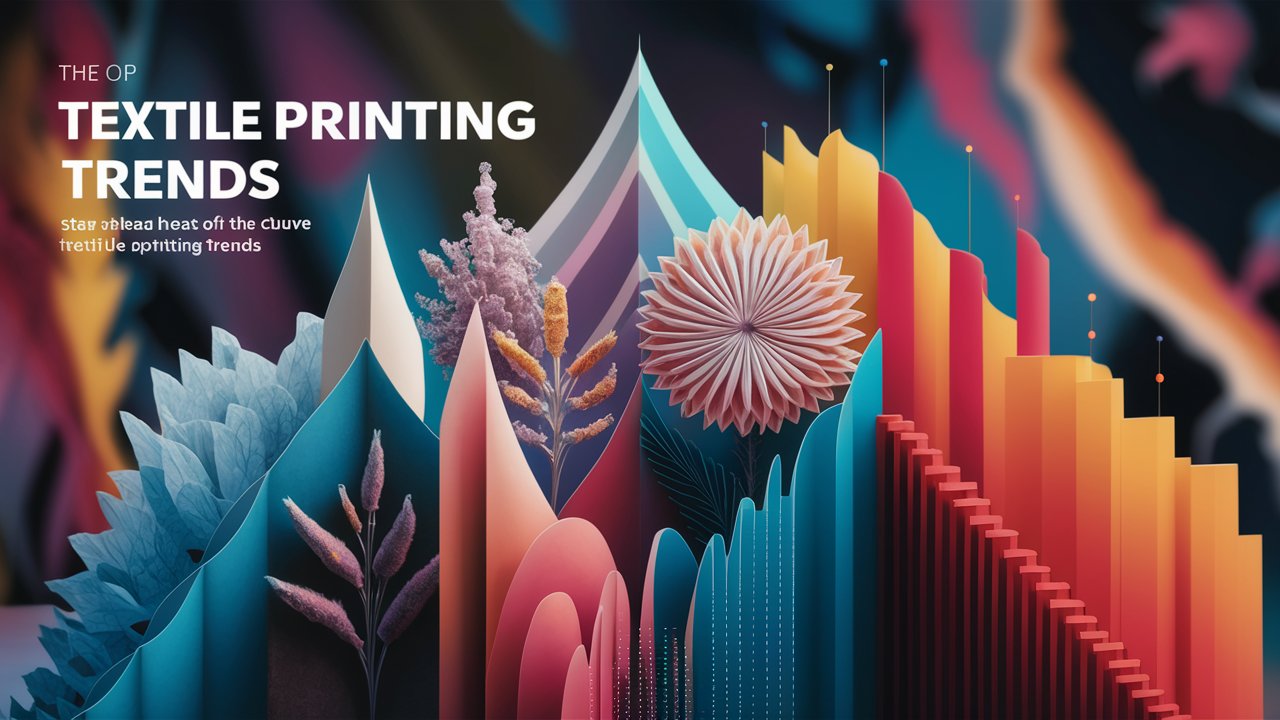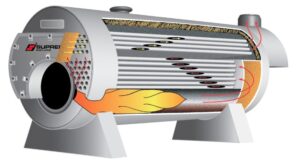Top Textile Printing Trends of Stay Ahead of the Curve!
- 1 What is Textile Printing?
- 2 Importance of Textile Printing
- 2.1 Scope of Textile Printing Trends
- 2.2 Brief History of Textile Printing
- 2.3 Evolution of Textile Printing Techniques
- 2.4 Current Landscape of the Textile Printing Industry
- 3 Sustainable Textile Printing
- 3.1 Digital Textile Printing
- 3.2 Waterless Textile Printing
- 3.3 3D Printing in Textiles
- 3.4 Smart Textile Printing
- 3.5 Collaborative Design Platforms
- 3.6 Direct-to-Garment Printing
- 3.7 Bio-fabrication in Textile Printing
- 3.8 Customization and Personalization
- 3.9 Integration of AI and Machine Learning
- 3.10 Nanotechnology in Textile Printing
- 3.11 Innovative Ink Technologies
- 3.12 Blockchain in Textile Printing
- 3.13 Cross-Industry Collaborations
- 3.14 Circular Economy Practices
- 3.15 Wearable Technology Integration
- 3.16 Textile Printing for Medical Applications
- 3.17 Textile Printing in Fashion
- 3.18 Print-on-Demand Services
- 3.19 Augmented Reality Experiences
- 4 My opinion
Textile printing in Pakistan has undergone a remarkable transformation in recent years, propelled by technological advancements, environmental consciousness, and shifting consumer preferences. Staying ahead of the curve in this dynamic industry requires a keen understanding of emerging trends and innovative practices. This comprehensive guide delves into the top textile printing trends shaping the industry’s future in Pakistan, empowering businesses to adapt, thrive, and innovate.
What is Textile Printing?
Textile printing, a subset of textile design, involves applying colours and designs to fabrics using various printing techniques. From intricate patterns to bold graphics, textile printing adds aesthetic appeal and functionality to a wide range of products, including apparel, home textiles, and accessories.
Importance of Textile Printing
Textile printing is pivotal in the fashion and apparel industry, enabling brands to differentiate their products, captivate consumers, and express unique design visions. Beyond aesthetics, textile printing facilitates customization, sustainability, and technological integration, driving innovation and market competitiveness.
Scope of Textile Printing Trends
The scope of textile printing trends encompasses diverse areas, including sustainability, digitalization, material science, and cross-industry collaborations. As consumer demands evolve and technological capabilities expand, textile printing trends continue to redefine production processes, product functionalities, and market dynamics.
Brief History of Textile Printing
Textile printing dates back centuries, with traditional methods such as block printing, screen printing, and hand painting laying the foundation for modern printing techniques. Over time, technological advancements and industrialization have revolutionized the textile printing landscape, paving the way for innovation and creativity.
Evolution of Textile Printing Techniques
The evolution of textile printing techniques reflects the convergence of artistry, science, and technology. From manual processes to automated systems, textile printing has witnessed significant advancements in efficiency, precision, and versatility, enabling manufacturers to meet diverse customer demands and quality standards.
Current Landscape of the Textile Printing Industry
The current landscape of the textile printing industry is characterized by rapid technological innovation, market dynamism, and sustainability imperatives. With a growing emphasis on eco-friendly practices, digitalization, and customization, textile printing companies are navigating new opportunities and challenges in an increasingly competitive market environment.
Sustainable Textile Printing
Sustainability has emerged as a defining trend in the textile printing industry, driven by environmental concerns and consumer awareness. Sustainable textile printing encompasses various practices, such as eco-friendly inks, waterless printing technologies, and recycling initiatives, to reduce environmental impact and promote circular economy principles.
Digital Textile Printing
Digital textile printing represents a paradigm shift in the industry, offering advantages in speed, flexibility, and design capabilities. By eliminating the need for traditional printing plates and minimizing water consumption, digital printing enables on-demand production, customization, and vibrant colour reproduction, catering to fast-changing market trends and consumer preferences.
Waterless Textile Printing
Waterless textile printing addresses one of the most significant environmental challenges associated with traditional printing methods: water consumption and wastewater pollution. By utilizing innovative inkjet technologies and solvent-free formulations, waterless printing reduces water usage, energy consumption, and environmental footprint, aligning with sustainability goals and regulatory requirements.
3D Printing in Textiles
3D printing is revolutionizing the textile industry by enabling the creation of complex, customized textile structures with unparalleled precision and efficiency. From prototyping to production, 3D printing offers advantages in design freedom, material optimization, and waste reduction, opening up new possibilities for innovative textile applications, including apparel, footwear, and technical textiles.
Smart Textile Printing
Smart textiles, integrated with electronic components and sensing capabilities, are redefining the concept of wearable technology and functional fabrics. Clever textile printing techniques enable the seamless integration of sensors, conductive traces, and actuators into textile substrates, facilitating applications in healthcare, sports performance monitoring, and interactive fashion.
Collaborative Design Platforms
Collaborative design platforms leverage digital technologies to connect designers, manufacturers, and consumers in a collaborative ecosystem. By streamlining the design-to-production process, collaborative platforms enhance creativity, efficiency, and transparency, fostering innovation and value creation across the textile printing supply chain.
Direct-to-Garment Printing
Direct-to-garment (DTG) printing offers a cost-effective and sustainable alternative to traditional screen printing for apparel customization and small-batch production. By digitally printing designs directly onto garments, DTG eliminates the need for pre-treatment chemicals and reduces ink waste, enabling intricate designs, vibrant colours, and rapid turnaround times.
Bio-fabrication in Textile Printing
Bio-fabrication techniques, such as bio-inkjet printing and cell patterning, enable the fabrication of functional textile structures using living cells and biomaterials. By merging biotechnology with textile engineering, bio-fabrication opens up new avenues for sustainable production, medical textiles, and biomimetic design, with potential applications in tissue engineering, regenerative medicine, and bioelectronics.
Customization and Personalization
Customization and personalization drive consumer engagement and brand loyalty in the textile industry. With advances in digital printing technologies and data analytics, brands can offer personalized products tailored to individual preferences, sizes, and style preferences, enhancing customer satisfaction and market differentiation.
Integration of AI and Machine Learning
Integrating artificial intelligence (AI) and machine learning algorithms revolutionises textile design, production, and supply chain management. By analyzing vast amounts of data, AI-powered systems can optimize design processes, predict consumer trends, and automate production workflows, empowering businesses to make data-driven decisions and stay competitive in a rapidly evolving market landscape.
Nanotechnology in Textile Printing
Nanotechnology holds promise for enhancing textile properties, such as durability, water repellency, and antimicrobial activity, by applying nanoscale coatings and functional additives. By leveraging nanomaterials and surface engineering techniques, textile printers can create advanced fabrics with enhanced performance characteristics, catering to diverse end-user requirements and industry standards.
Innovative Ink Technologies
Innovative ink technologies, including conductive inks, phase change inks, and colour-changing inks, are expanding the creative possibilities of textile printing. These speciality inks enable the fabrication of functional textiles with enhanced properties, such as stretchability, conductivity, and thermochromic effects, unlocking new opportunities in smart textiles, wearable electronics, and interactive design.
Blockchain in Textile Printing
Blockchain technology offers transparency, traceability, and authenticity in the textile printing supply chain, enabling brands and consumers to verify product origins, materials, and production processes. Using blockchain-based solutions, textile printers can enhance supply chain efficiency, reduce counterfeiting risks, and build consumer trust, fostering a more sustainable and ethical industry ecosystem.
Cross-Industry Collaborations
Cross-industry collaborations are driving innovation and synergy in the textile printing landscape. Companies partner with technology firms, material suppliers, and research institutions to explore new applications and business models. By combining expertise from diverse sectors, cross-industry collaborations accelerate product development, market penetration, and sustainability initiatives, creating value for stakeholders and end-users.
Circular Economy Practices
Circular economy practices, such as textile recycling, upcycling, and closed-loop production systems, are gaining momentum in the textile printing industry as companies seek to minimize waste and resource consumption. By adopting circular economy principles, textile printers can reduce environmental impact, extend product lifecycles, and create value from post-consumer and post-industrial waste streams.
Wearable Technology Integration
Wearable technology integration is blurring the boundaries between fashion, functionality, and connectivity as textiles become platforms for embedded sensors, displays, and communication devices. From fitness trackers to smart garments, wearable technology offers personalized experiences, real-time feedback, and seamless interaction with digital ecosystems, enhancing user engagement and performance monitoring.
Textile Printing for Medical Applications
Textile printing is unlocking new frontiers in medical applications, with advancements in bioactive textiles, wound dressings, and patient monitoring systems. By integrating medical-grade materials and printing techniques, textile printers can create innovative solutions for wound care, drug delivery, and wearable medical devices, improving patient outcomes and healthcare delivery.
Textile Printing in Fashion
Textile printing drives innovation and creativity in the fashion industry, enabling designers to experiment with colours, textures, and patterns on diverse fabric substrates. From haute couture to streetwear, textile printing offers limitless possibilities for artistic expression, brand storytelling, and consumer engagement, shaping the future of fashion in an ever-evolving marketplace.
Print-on-Demand Services
Print-on-demand services offer a flexible and sustainable approach to textile printing, allowing brands to produce custom designs in response to real-time demand. By leveraging digital printing technologies and automated fulfilment processes, print-on-demand services minimize inventory risks, reduce waste, and offer personalized products tailored to individual preferences, fostering a more efficient and customer-centric supply chain.
Augmented Reality Experiences
Augmented reality (AR) experiences transform how consumers interact with textile products, as virtual try-on tools and interactive apps bridge the gap between online shopping and physical retail. By integrating AR technology into marketing campaigns and e-commerce platforms, brands can enhance engagement, visualization, and purchasing decisions, creating immersive shopping experiences that drive conversion and brand loyalty.
My opinion
For a Textile company to maintain its edge in the industry, it must adopt a proactive approach to innovation, sustainability, and consumer engagement. By embracing emerging trends, leveraging advanced technologies, and fostering collaboration across sectors, textile printers within the company can effectively navigate market complexities, seize new opportunities, and drive positive impact in an ever-changing landscape.

















